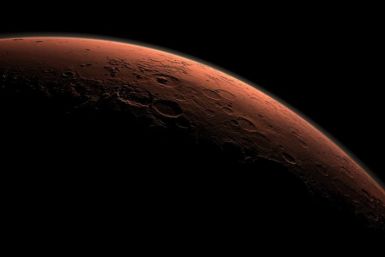Temperatures in the Arctic, which is going through the polar night, are about 36 degrees Fahrenheit higher than the mean temperature for this time of the year.
The president-elect's plans for the space agency aren't clear yet but past comments indicate he may still support manned travel to Mars.
A new study based on analysis of data gathered by the Opportunity rover states that Mars is, and has been for millions of years, an incredibly dry planet.
During the two-week mission, researchers will collect rock samples to practice and perfect protocols that would be needed during similar missions on Mars.
A mysterious object discovered in images taken by NASA’s Curiosity rover last week is an iron-nickel meteorite, NASA has confirmed.
In a report Wednesday, the space agency outlined 25 "knowledge gaps" that need to be addressed to prevent contamination during human missions to alien planets and moons.
A first-of-its-kind instrument being developed at NASA will use the sense of smell to look for traces of life on the red planet.
The payloads would be used to help NASA's overall goal to put people on Mars.
Just days after it successfully inserted an orbiter around the red planet, the European Space Agency revealed fresh details of the second phase of the ExoMars 2020 mission.
Streetwear maven, DOPE, has collaborated with the Jackson Pollock estate to release a four-piece capsule collection in the artist's honor.
Ten thousand volunteers plan to investigate mysterious ice formations on the red planet.
The ESA’s ExoMars Schiaparelli lander was supposed to have made a soft landing on the surface of the red planet last week.
New images from NASA's Mars Reconnaissance Orbiter suggest the ExoMars lander crashed onto the surface of the planet.
On Sunday, Elon Musk shed further light on his plan to colonize Mars. The first inhabitants of the red planet would probably live in geodesic domes surrounded with a horde of mining "droids," he said.
A missing European space probe was destroyed on impact after plummeting to the surface of Mars.
Bezos, one of the richest men in the world, also owns the Washington Post, a paper that Donald Trump has repeatedly criticized.
Twenty new surface features on Mars — identified by volunteers using the “Planet Four: Terrains” website — have been earmarked for further observation by NASA.
European Space Agency officials confirmed Thursday that the Trace Gas Orbiter had entered an elliptical orbit around the red planet — calling it a "huge success" for the mission.
The European Space Agency confirms that the ExoMars spacecraft has landed on the red planet.
New images from NASA’s Mars Atmosphere and Volatile Evolution mission show “unprecedented” level of detail from the red planet.
If Schiaparelli lands on the Martian surface, it would mark the first successful European attempt to land a probe on Mars.
A new study has revealed that our moon is being pummeled by meteorites far more frequently than previously assumed.







































